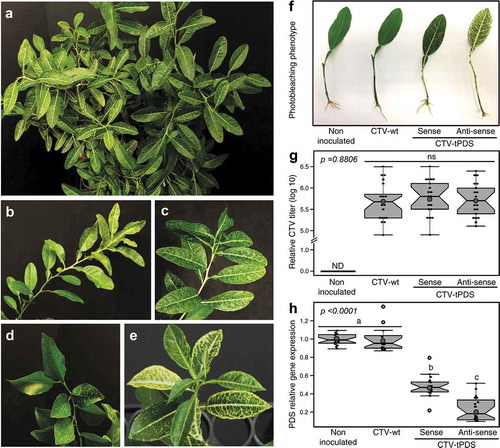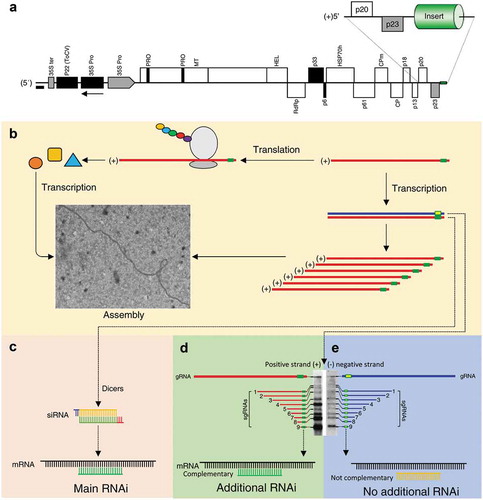Figures & data
Figure 1. Photobleaching phenotype is unequally distributed within citrus trees. (a) In Citrus macrophylla (alemow), the phenotype could be more pronounced on one side of the tree than the other side. (b) Within the same branch upper leaves may show more bleaching than the lower leaves, or (c) in some cases phenotype equally appears within the entire branch. (d, e) In Citrus sinensis (L.) Osbeck. (sweet orange) and Citrus aurantium, (sour orange), lower leaves have more photobleaching than upper leaves. (f) Plantlets used to study the influence of the targeted gene sequence orientation in the CTV construct on the RNAi efficiency. (g) Although the virus titers were similar, (h) the reduction of pds expression was significantly more when the anti-sense orientation was used.

Figure 2. Replication of CTV construct in citrus. (a) Genomic map of Citrus tristeza virus (CTV) with the foreign sequence insert position. (b) The replication cycle of CTV as positive single-stranded RNA virus (+ssRNA). (c)The 20 nucleotides siRNAs resulted from the dicer activity and are responsible for the main RNAi of the target gene. (d, e) The subgenomic RNAs (sgRNA) are mostly positive strands (Gowda et al 2001), note the intensity of positive-strand sgRNA compared to negative-strand RNAs. In the case of when the insert is in the antisense orientation, complementary target sequences in the form of sgRNA are produced and enhance the gene silencing effect.

